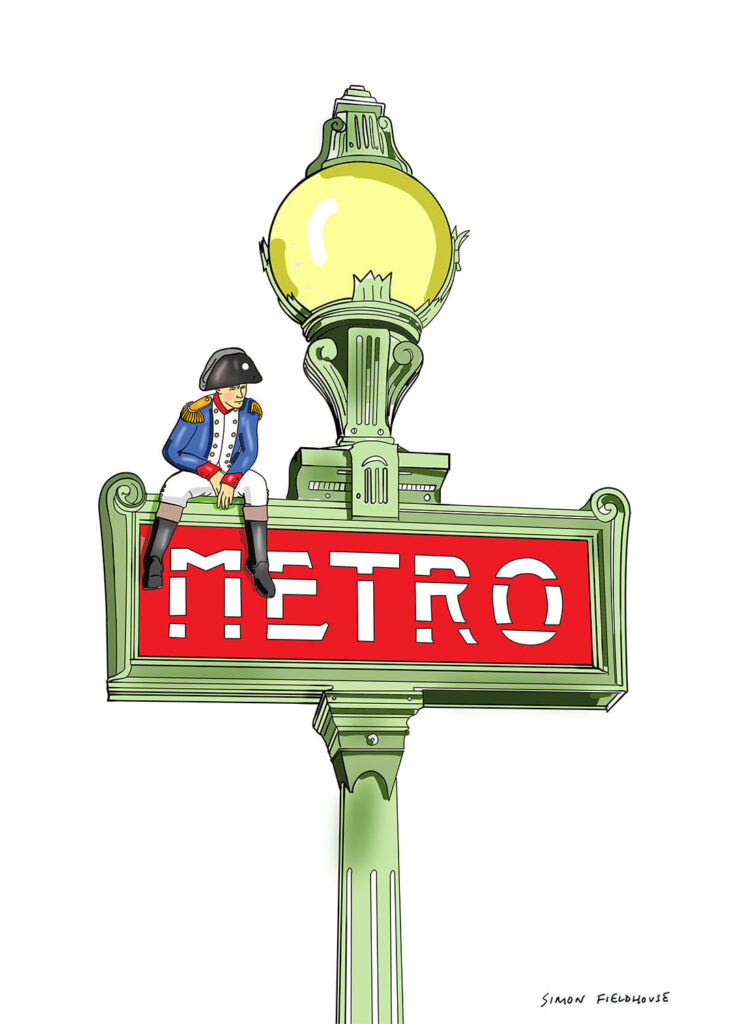
Paris Metro and Napoleon
Paris Metro and Napoleon
The Paris Métro (French: Métro de Paris [metʁo də paʁi]; short for Métropolitain [metʁɔpɔlitɛ̃]) is a rapid transit system in the Paris metropolitan area, France. A symbol of the city, it is known for its density within the capital's territorial limits, uniform architecture and unique entrances influenced by Art Nouveau. It is mostly underground and 225.1 kilometres (139.9 mi) long.[3] It has 304 stations, of which 64 have transfers between lines.[1][4] There are 16 lines (with an additional four under construction), numbered 1 to 14, with two lines, 3bis and 7bis, named because they started out as branches of Line 3 and Line 7 respectively. Line 1 and Line 14 are automated, with Line 4 opened on 13 January 2022. Lines are identified on maps by number and colour, with the direction of travel indicated by the terminus.
It is the second busiest metro system in Europe, after the Moscow Metro, as well as the tenth busiest in the world.[5] It carried 1.520 billion passengers in 2015, 4.16 million passengers a day, which amounts to 20% of the overall traffic in Paris.[2][6] It is one of the densest metro systems in the world, with 244 stations within the 105.4 km2 (41 sq mi) of the City of Paris. Châtelet–Les Halles, with five Métro and three RER lines, is one of the world's largest metro stations.[7] However, the system has generally poor accessibility, because most stations were built underground well before this became a consideration.
The first line opened without ceremony on 19 July 1900, during the World's Fair (Exposition Universelle).[3] The system expanded quickly until World War I and the core was complete by the 1920s; extensions into suburbs were built in the 1930s. The network reached saturation after World War II with new trains to allow higher traffic, but further improvements have been limited by the design of the network and in particular the short distances between stations. Besides the Métro, central Paris and its urban area are served by five RER lines (developed from the 1960s), ten tramway lines (developed from the 1990s) with an additional four under construction, eight Transilien suburban trains, as well as three VAL lines at Charles de Gaulle Airport and Orly Airport. In the late 1990s, Line 14 was put into service to relieve RER A; it reaches Mairie de Saint-Ouen in 2020 constitutes the network's most recent extension. A large expansion programme is currently under construction with four new orbital Métro lines (15, 16, 17 and 18) around the Île-de-France region, outside Paris city limits. Other extensions are currently under construction on Line 11, Line 12, and Line 14. Further plans exist for Line 1 and Line 10, as does a merger of Line 3bis and Line 7bis.